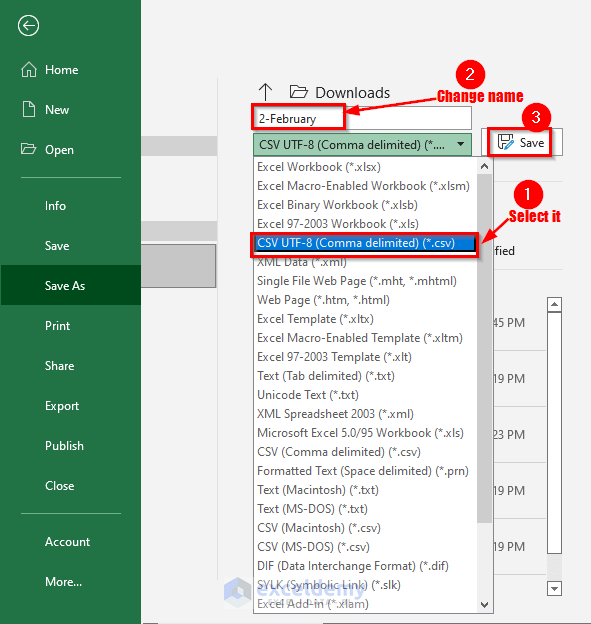5 Easy Ways to Transfer Excel Sheets Between Workbooks

Welcome to our comprehensive guide on how to transfer Excel sheets between workbooks! Managing multiple spreadsheets and consolidating data can be a daunting task for many, but fear not. We've compiled a list of 5 simple methods that will help you seamlessly transfer Excel sheets from one workbook to another, enhancing your productivity and data management skills.
Method 1: Drag and Drop

Perhaps the most straightforward method for transferring an Excel sheet is the simple drag and drop technique. Here’s how you do it:
- Open the source workbook containing the sheet you wish to move.
- Open the target workbook where you want to insert the sheet.
- Place both workbooks side by side or arrange them for easy access.
- Click and hold the tab of the sheet you want to move or copy in the source workbook.
- Drag the sheet to the target workbook. You will see a black triangle or outline to indicate where the sheet will be placed.
- Release the mouse button to drop the sheet into the new location.
🔎 Note: This method allows for quick transfer but might not be as precise for large datasets or when you need to maintain formula references.
Method 2: Use the Move or Copy Sheet Feature

If you prefer a more controlled transfer, Excel’s built-in Move or Copy Sheet feature is your ally:
- Right-click on the sheet tab you want to transfer.
- Select Move or Copy from the context menu.
- A dialog box will appear. Choose the workbook where you want to move or copy the sheet from the drop-down list under “To book.”
- Select where you want the sheet to be placed in the “Before sheet” list.
- If you want to copy rather than move, check the “Create a copy” box.
- Click OK to proceed with the transfer.
💡 Note: This method provides options to keep the source sheet or create a duplicate, offering flexibility in data management.
Method 3: Importing an Excel Sheet

Importing an Excel sheet can be particularly useful when you want to integrate external data:
- Open your destination workbook.
- Go to Data > Get External Data > From Other Sources > From Microsoft Query.
- In the “Choose Data Source” dialog, select Excel Files* and click OK.
- Navigate to and select your source workbook, then click OK.
- Choose the sheet or named range to import and click Next.
- Finish the wizard, ensuring the data is imported to a new sheet or a specific location in your workbook.
📘 Note: Importing external data ensures that data integrity is maintained, which is beneficial for data analysis and reporting.
Method 4: Using VBA for Bulk Transfer

For those comfortable with VBA or wanting to automate repetitive tasks, here’s how to transfer sheets using macros:
- Open the VBA editor (Alt + F11).
- Insert a new module from the Insert menu.
- Copy and paste the following code into the module:
| Public Sub MoveSheets() |
| Dim sourceWorkbook As Workbook |
| Dim targetWorkbook As Workbook |
| Dim sourceSheet As Worksheet |
| Dim sheetName As String |
| sheetName = "Sheet1" |
| Set sourceWorkbook = Workbooks.Open("C:\Path\To\SourceWorkbook.xlsx") |
| Set targetWorkbook = Workbooks.Open("C:\Path\To\TargetWorkbook.xlsx") |
| sourceWorkbook.Sheets(sheetName).Move After:=targetWorkbook.Sheets(targetWorkbook.Sheets.Count) |
| sourceWorkbook.Close False |
| End Sub |

- Adjust the file paths and sheet name to match your data.
- Run the macro to execute the transfer. You can also assign this macro to a button for ease of use.
🔧 Note: VBA scripting can save significant time when dealing with multiple sheets or large workbooks, but requires some learning.
Method 5: Excel Power Query for Data Transformation

Power Query, introduced in Excel 2010 and enhanced in later versions, provides powerful data manipulation capabilities:
- Open your target workbook and go to the Data tab.
- Choose From File > From Workbook.
- Navigate to the source workbook and select it.
- In the Navigator, select the sheet or range you want to transfer.
- Use the query editor to transform, merge, or append data as needed.
- Once you’re satisfied, click Close & Load to integrate the transformed data into your workbook.
🔍 Note: Power Query is excellent for data cleansing and integration, providing dynamic connections to keep data updated.
In this extensive guide, we've explored five different methods to transfer Excel sheets between workbooks. Each method has its unique advantages, suited for different scenarios:
- Drag and Drop for quick, visual transfer.
- Move or Copy Sheet for more control over the process.
- Importing for integrating external data with integrity.
- VBA for bulk or automated transfers.
- Power Query for data transformation and dynamic linking.
By mastering these methods, you'll streamline your work, enhance your data management, and make your Excel experience more efficient and enjoyable. Whether you're a beginner or an advanced user, there's a technique here to match your level of comfort with Excel, ensuring your data is where it needs to be, when it needs to be there.
Can I transfer Excel sheets without opening the source workbook?

+
Yes, you can transfer sheets using VBA or Power Query without opening the source workbook manually. These methods can load workbooks in the background and move or copy data.
Will these methods work for transferring sheets with Macros?

+
The drag and drop and move/copy methods do not transfer macros by default. However, you can manually copy and paste macros or use VBA to ensure they are also transferred.
How can I ensure the data remains intact when using these methods?

+
Methods like importing and Power Query are designed to maintain data integrity. Additionally, ensure that you’re not using any relative references or external links that could break upon transfer.
What should I do if my workbook contains data links?

+
If your workbook contains links to other sheets or external files, you might need to re-establish these links after transferring sheets, especially if you’re using methods like drag and drop or move/copy.
Can I automate these methods for regular use?

+
Yes, methods involving VBA can be automated and scheduled to run at specific intervals, making data management tasks more efficient for regular use.